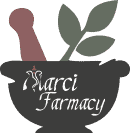
Natural Diet and Lifestyle Recommendations to Lower Cholesterol
Contributing factors to dyslipidemia or elevated cholesterol serum levels1
- Genetics(Lp(a))
- Medications (anticonvulsants, antipsychotics, estrogen, corticosteroids, diuretics)2
- Diabetes
- Lifestyle factors including diet, obesity, smoking, lack of physical activity
Additional Testing1,3
- Triglycerides
- HDL
- Lp(a) – genetic
- LDL particle size (either Apo B – small, dense; Apo A – large, fluffy) – there is evidence that the smaller, more dense LDL particle number/size is predictive of atherogenicity or cardiovascular risk due to the smaller LDL depositing in the crevasses of the blood vessels leading to plaque formation, oxidation, and inflammation
- Additional cardiovascular risk markers: homocysteine, hs-CRP, fibrinogen, vitamin D, and erythrocyte sedimentation rate (ESR)
DietaryRecommendations1,4,5
- Eliminating refined carbohydrates, sweets, saturated fats, trans fats (hydrogenated vegetable oils) think all processed foods and foods that come in packages
- Increasing the intake of monounsaturated fats and polyunsaturated fats both having a positive effect on serum lipids and reducing the risk of cardiovascular disease
- Mediterranean style diet is recommended in treating dyslipidemia – several studies have shown evidence that a Mediterranean diet in lowering cholesterol and reducing cardiovascular risk
- Increasing intake of leafy green vegetables, plant sterols, fruits, whole grains (cereal and whole grain bread), legumes, beans, nuts, seeds, garlic, green tea, and soluble fiber along with fatty fish such as salmon 2-3 times a week with moderate use of olive oil and coconut oil and consumption of red wine no more than 2 glasses per day
- Eating pasture-raised chicken, wild-caught fish, and pasture-raised eggs – recent studies concluded that dietary intake of cholesterol containing foods doesn’t not contribute to elevated serum cholesterol levels
- Limiting intake of grass-fed red-meat and dairy to a few times a week
Exercise Recommendations and Lifestyle Modifications1
- Exercise 4-5 times a week for at least 30 minutes
- Strength training at least 2 times a week
- Quit smoking
- Limit alcohol use
Supplements1,4
- Fish oil EPA/DHA 3:2 ratio 3000 – 5000 mg daily – reduce serum triglycerides,increases HDL and LDL particle sizes
- Niacin 1500 – 2000 mg daily taken with evening meal to minimize GI side effects; to limit flushing take with Quercetin 1 gm in the morning– increases HDL, ratio of large/small LDL particle sizes, and reduces triglycerides, LDL, and Lp(a)
- Tocotrienols Gamma & Delta 250 mg in the evening with food – antioxidant, reducing oxidation of LDL particles and supporting cardiovascular health
- VitaminC 500 mg daily – antioxidant, helpful in treating elevated Lp(a)
- Red Yeast Rice 2400 – 4800 mg daily – mild inhibitor of HMG-CoA-reductase enzyme like statin’s mechanism of action
Supplements should be continued for 1-3 months and reassessment for need to continue should be based upon toleration and subsequent lab results (for doses > 2000 mg of niacin liver enzymes should be checked in 2-3 months following initiation)
Follow-up
- Initial diet and supplement recommendations should be followed up within one month, to assess for compliance and toleration of supplementation – assessment of weight-loss, body fat loss, and incorporating diet and lifestyle modifications
- Follow-up lipid profile should be done within 2-3 months following these recommendations and reassess for continuation of supplements prescribed
References
1. Jurgelewicz M. Dyslipidemia. [PDF]. Bridgeport, CT: UB Nutrition Institute; 2017.
2. De Groot LJ, Chrousos G, Dungan K, et al., editors. Endotext [Internet]. South Dartmouth, MA: MDText.com, Inc.; 2000-.
3. Lemankski PE. Beyond Routine Cholesterol Testing: The Role of LDL Particle Size Assessment. CDPHP Medical Messenger. 2004.
4. KohlstadtI, ed. Advancing Medicine with Food andNutrients. 2nd Ed. Boca Raton, FL: CRC Press; 2012.
5. https://www.cnn.com/2015/02/19/health/dietary-guidelines/
